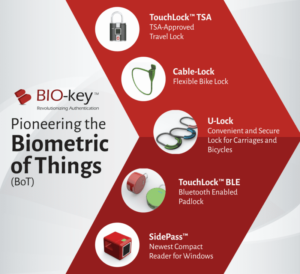June is Consumer Biometrics Month at FindBiometrics, during which we are placing a featured focus on the everyday biometry shaping lives, locking doors, and protecting accounts. To kick things off right we have compiled a primer to bring you up to speed on some of the major themes we will be examining in our coverage over the coming weeks.
Smartphone Proliferation
 The entire conversation of consumer biometrics starts with the modern smartphone. It’s easy to forget, now that biometrics are on the verge of smartphone ubiquity, that the introduction of Touch ID on the iPhone was met with controversy in the media, born out of a popular association between the technology and criminal records. It didn’t take long for negative buzz to die down, however, and the smartphone quickly became the mainstream connection point between consumers and biometric technology.
The entire conversation of consumer biometrics starts with the modern smartphone. It’s easy to forget, now that biometrics are on the verge of smartphone ubiquity, that the introduction of Touch ID on the iPhone was met with controversy in the media, born out of a popular association between the technology and criminal records. It didn’t take long for negative buzz to die down, however, and the smartphone quickly became the mainstream connection point between consumers and biometric technology.
Today, smartphones connect everyday users to a variety of biometric modalities, from face, voice, iris and fingerprint, to various types of vein-recognition, and more. The following articles provide an overview of the current state of the biometric smartphone market, which remains the primary delivery-point for consumer biometrics tech.
Cheaper Biometric Smartphones Flooding Global Market: Acuity
All Smartphones Shipped In 2018 Will Feature Biometric Tech: Acuity
Acuity: Biometric Smartphones Are Officially Mainstream
Biometric Locks
 Now that biometrics have been demystified by popular mobile deployments and applications, and innovations have made the technology more available and accessible than ever before, strong authentication is becoming utilitarian. A new wave of consumer-facing biometric access control came out of CES at the start of this year, and now biometric locks are becoming a reality. The following posts highlight fingerprint-protected padlocks and bicycle locks that represent the first steps toward wide-scale biometric physical access for consumers.
Now that biometrics have been demystified by popular mobile deployments and applications, and innovations have made the technology more available and accessible than ever before, strong authentication is becoming utilitarian. A new wave of consumer-facing biometric access control came out of CES at the start of this year, and now biometric locks are becoming a reality. The following posts highlight fingerprint-protected padlocks and bicycle locks that represent the first steps toward wide-scale biometric physical access for consumers.
GUEST POST: An Exclusive Look at BIO-key’s Biometric Bicycle Locks
BIO-key Aims to Wow With Biometric Padlocks at CES 2017
Plug-n-Play
 While biometrics are being built into new consumer devices on a near-weekly basis, many PCs and laptops still don’t come with embedded sensors, despite the biometric support offered by modern operating systems like Windows 10. Thankfully for consumers looking to upgrade their personal convenience and security, many of the same innovations that led to the mobile revolution have also brought plug-n-play USB fingerprint sensors to the market.
While biometrics are being built into new consumer devices on a near-weekly basis, many PCs and laptops still don’t come with embedded sensors, despite the biometric support offered by modern operating systems like Windows 10. Thankfully for consumers looking to upgrade their personal convenience and security, many of the same innovations that led to the mobile revolution have also brought plug-n-play USB fingerprint sensors to the market.
Almost 100 Products Support Windows Hello Biometric Authentication
Kensington Officially Releases USB Fingerprint Reader
New USB Dongles Feature Synaptics Fingerprint Sensor
USB Scanners Let More Windows Users Take Advantage of Biometric Security
Synaptics Launches Biometric USB Dongle
SideTouch USB Sensor Solution Compatible With Windows, Android
Biometric Accessories
While wearable tech still hasn’t caught on with the mainstream fervor many expected when Apple, Samsung, and their rivals launched the first generation of modern smartwatches, biometrics are a key aspect of high tech wristbands, and even earbuds. Primarily, in the wearable space, biometric technology is deployed in a fitness tracking capacity, measuring a user’s heart rate. But increasingly we are seeing innovations in the wearable tech arena that leverage biometrics for authentication purposes. The following links will help illustrate the many ways biometrics are used in consumer accessories that measure your uniqueness and track your vital signs.
NEC Announces Earbud-based Biometric Authentication Technology
Mobile and Wearable Biometric Authentication to Reach 3.3B Users by 2022: Report
Valencell Biometric Tech Finds Its Way Into More Earbuds
The Biometric Bra Is Now Available For Purchase
Goodix Delves Into Smart Cars and Wearables at COMPUTEX
AI Enabled
Artificial Intelligence his turning from novelty to consumer necessity thanks to the competition between Amazon, Microsoft, Google, and Apple, and the primary user interface method is biometric. Voice-powered AI assistants like Amazon Alexa don’t just do what you tell them, but are becoming more astute at recognizing who you are thanks to speaker recognition and machine vision technology. The following articles offer a glimpse into the increasingly mainstream world of biometric AI:
We’re Moving from a Mobile-First to an ‘AI-First’ World: Google
Alexa Can Lock Your Doors Via Voice Command
BRIEF: The Artificial Intelligence Renaissance is Underway
Sensory’s Natural Speech Engine Now Features AI Avatar
WWDC Reveals Strong AI Focus for Apple
Connected Car Biometrics
Biometrics are coming to the Internet of Things, and the most exciting avenue for this is the connected car: facial recognition, voice controls, fingerprint sensors in steering wheels, and even iris scanners in rear view mirrors. While the biometric-integrated automobile may still be a few years away from landing in your driveway, the technology bringing identity into the smart car of the future is the epitome of consumer security, convenience, and luxury. Check out some of the highlights in the biometric vehicle space:
Rear-view Mirror Driver Authentication Powered by Delta ID
Biometrics On Track for Automotive Sector: Delta ID
Can Biometrics Protect Connected Cars From Digital Theft?
BioLock Brings ECG Authentication to Vehicles
Apple Car Development Unlocks Touch ID Car Key
Start Your Hyundai Genesis’ Engine With Remote Voice Command
*
Stay posted to FindBiometrics throughout June as we continue to shine the spotlight on consumer biometrics. Be sure to follow us on Twitter so you don’t miss a beat.
Consumer Biometrics Month is made possible by BIO-key


Follow Us